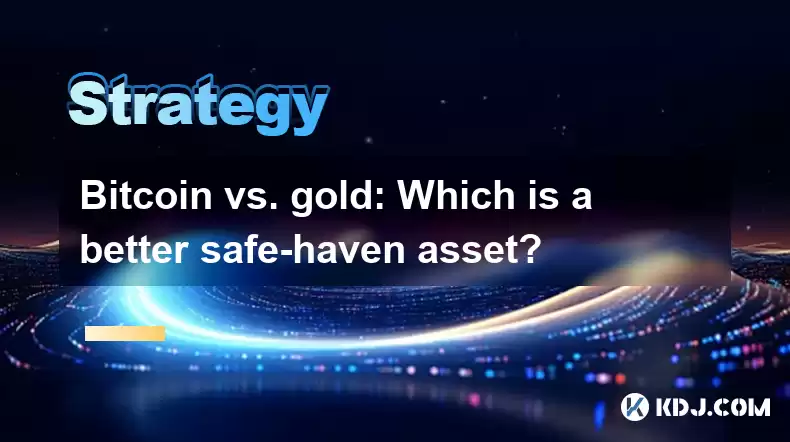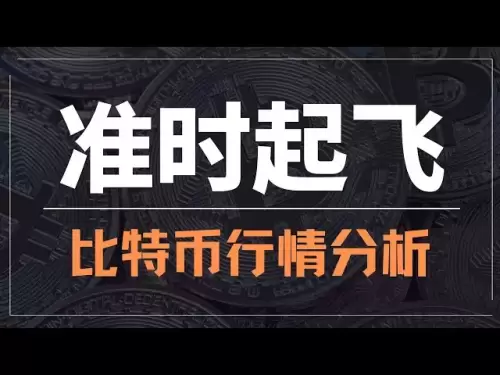-
 Bitcoin
Bitcoin $117300
1.93% -
 Ethereum
Ethereum $3866
5.21% -
 XRP
XRP $3.109
3.81% -
 Tether USDt
Tether USDt $1.000
0.01% -
 BNB
BNB $781.5
1.52% -
 Solana
Solana $173.0
2.95% -
 USDC
USDC $0.9998
0.00% -
 Dogecoin
Dogecoin $0.2181
6.31% -
 TRON
TRON $0.3403
0.93% -
 Cardano
Cardano $0.7683
3.91% -
 Hyperliquid
Hyperliquid $40.08
5.09% -
 Sui
Sui $3.742
7.38% -
 Stellar
Stellar $0.4152
4.69% -
 Chainlink
Chainlink $18.40
10.03% -
 Bitcoin Cash
Bitcoin Cash $580.6
2.21% -
 Hedera
Hedera $0.2543
4.25% -
 Ethena USDe
Ethena USDe $1.001
-0.01% -
 Avalanche
Avalanche $22.94
3.52% -
 Litecoin
Litecoin $121.8
2.24% -
 UNUS SED LEO
UNUS SED LEO $8.955
-0.41% -
 Toncoin
Toncoin $3.330
3.03% -
 Shiba Inu
Shiba Inu $0.00001270
2.97% -
 Uniswap
Uniswap $10.34
6.42% -
 Polkadot
Polkadot $3.805
3.86% -
 Dai
Dai $1.000
0.01% -
 Bitget Token
Bitget Token $4.429
1.80% -
 Cronos
Cronos $0.1495
4.65% -
 Monero
Monero $255.6
-9.08% -
 Pepe
Pepe $0.00001096
4.40% -
 Aave
Aave $282.9
7.85%
Bitcoin vs. gold: Which is a better safe-haven asset?
Bitcoin, a volatile digital asset, and gold, a stable traditional safe-haven, both offer unique benefits as inflation hedges and portfolio diversifiers.
Apr 10, 2025 at 04:01 pm

Bitcoin and gold have both been touted as safe-haven assets, but they serve different purposes and have different characteristics that investors should consider. Bitcoin, often referred to as "digital gold," is a decentralized cryptocurrency that operates on blockchain technology. On the other hand, gold has been a traditional safe-haven asset for centuries, valued for its physical properties and historical stability. In this article, we will delve into the key aspects of both assets to help you determine which might be a better safe-haven investment for your portfolio.
Historical Performance and Stability
When evaluating safe-haven assets, one of the first factors to consider is their historical performance and stability. Gold has a long history of being a reliable store of value. Its value has been recognized for thousands of years, and it has maintained its purchasing power over long periods. During times of economic uncertainty, such as the 2008 financial crisis, gold prices often rise as investors seek a safe place to park their money.
In contrast, Bitcoin is a relatively new asset, having been introduced in 2009. Its price has been highly volatile, with significant fluctuations over short periods. While Bitcoin has seen impressive gains, it has also experienced sharp declines. For instance, in 2017, Bitcoin's price surged to nearly $20,000, only to fall back to around $3,000 in 2018. This volatility can be a concern for investors looking for a stable safe-haven asset.
Liquidity and Accessibility
Another important aspect to consider is the liquidity and accessibility of the asset. Gold is widely recognized and can be easily bought and sold through various channels, including banks, dealers, and online platforms. Physical gold can be stored in safe deposit boxes or at home, while gold ETFs and futures provide additional ways to invest in gold without holding the physical metal.
Bitcoin, on the other hand, is highly liquid but can be more challenging to access for some investors. It is primarily traded on cryptocurrency exchanges, which may have varying levels of security and regulatory oversight. Additionally, while Bitcoin can be stored in digital wallets, the process of setting up and securing these wallets can be daunting for those new to cryptocurrencies. However, the growing acceptance of Bitcoin by financial institutions and the development of user-friendly platforms have improved its accessibility over time.
Inflation Hedge
Both Bitcoin and gold are often considered as hedges against inflation. Gold has historically performed well during periods of high inflation. For example, during the 1970s, when inflation rates were high, gold prices rose significantly. This is because gold is seen as a tangible asset that retains value when the purchasing power of fiat currencies declines.
Bitcoin is also touted as an inflation hedge, particularly in the context of modern monetary policies. With central banks around the world engaging in quantitative easing and other measures that increase the money supply, some investors see Bitcoin as a digital alternative to gold. Bitcoin's fixed supply of 21 million coins is often cited as a reason why it could serve as an effective hedge against inflation. However, its short history means there is less data to support this claim compared to gold.
Regulatory Environment
The regulatory environment surrounding both assets is another critical factor to consider. Gold is well-established and regulated in most countries. Governments and financial institutions have clear guidelines on the trading, storage, and taxation of gold, which provides a level of certainty for investors.
Bitcoin, however, operates in a more uncertain regulatory landscape. Different countries have varying approaches to cryptocurrencies, ranging from outright bans to embracing them as legitimate financial instruments. This regulatory uncertainty can impact Bitcoin's value and its attractiveness as a safe-haven asset. For instance, news of potential regulatory crackdowns can lead to significant price drops, as seen in various instances over the years.
Diversification Benefits
Diversification is a key strategy for managing risk in an investment portfolio. Both Bitcoin and gold can offer diversification benefits, but in different ways. Gold is often negatively correlated with stocks and other traditional assets, meaning it can help reduce overall portfolio risk during market downturns. This negative correlation has been observed during various financial crises, making gold a valuable component of a diversified portfolio.
Bitcoin, while also offering diversification benefits, has a more complex relationship with traditional assets. Its correlation with stocks and other cryptocurrencies can vary over time, making it less predictable as a diversifier. However, for investors willing to take on higher risk, Bitcoin can provide significant diversification benefits, especially in a portfolio dominated by traditional assets.
Practical Considerations for Investors
When deciding between Bitcoin and gold as a safe-haven asset, practical considerations are crucial. Gold is tangible and can be held physically, which some investors find reassuring. It can also be easily converted into cash, and its value is widely recognized. However, storing and insuring physical gold can incur additional costs.
Bitcoin, being a digital asset, does not have the same physical presence as gold. It can be stored in digital wallets, which can be more convenient but also introduces cybersecurity risks. Investors need to take steps to secure their Bitcoin holdings, such as using hardware wallets and enabling two-factor authentication. Additionally, the process of buying and selling Bitcoin can be more complex than dealing with gold, especially for those unfamiliar with cryptocurrency exchanges.
Frequently Asked Questions
Q: Can Bitcoin and gold be used together in a portfolio?
A: Yes, many investors choose to include both Bitcoin and gold in their portfolios to achieve a balance between traditional and digital safe-haven assets. This approach can provide diversification benefits and help manage risk across different market conditions.
Q: How does the cost of investing in Bitcoin compare to gold?
A: The cost of investing in Bitcoin can vary depending on the platform used and the fees associated with transactions. Generally, buying and selling Bitcoin on exchanges involves trading fees, which can range from 0.1% to 1% or more. Additionally, there may be costs associated with securing Bitcoin in digital wallets. In contrast, the cost of investing in gold includes the price of the metal itself, plus any premiums charged by dealers, storage costs, and insurance if holding physical gold. Gold ETFs and futures may have lower entry costs but come with management fees.
Q: Are there any tax implications to consider when investing in Bitcoin and gold?
A: Yes, both Bitcoin and gold have tax implications that vary by jurisdiction. In many countries, gains from selling Bitcoin are subject to capital gains tax, and there may be additional taxes on income from mining or staking. For gold, capital gains tax may apply to profits from selling physical gold or gold ETFs, while some countries offer tax exemptions for certain types of gold investments. It's important for investors to consult with a tax professional to understand the specific tax implications in their region.
Q: How do geopolitical events impact the value of Bitcoin and gold?
A: Geopolitical events can significantly impact the value of both Bitcoin and gold. During times of geopolitical tension or uncertainty, investors often turn to safe-haven assets, which can drive up the prices of both Bitcoin and gold. For instance, during the Russia-Ukraine conflict, both assets saw increased demand as investors sought to protect their wealth. However, the specific impact can vary, with Bitcoin sometimes reacting more quickly to news due to its digital nature and 24/7 trading, while gold's response may be more gradual but sustained.
Disclaimer:info@kdj.com
The information provided is not trading advice. kdj.com does not assume any responsibility for any investments made based on the information provided in this article. Cryptocurrencies are highly volatile and it is highly recommended that you invest with caution after thorough research!
If you believe that the content used on this website infringes your copyright, please contact us immediately (info@kdj.com) and we will delete it promptly.
- Bitcoin Reserve, Gold Revaluation, Congress Considers: A New Era for US Financial Strategy?
- 2025-08-08 04:30:12
- KAITO's Momentum: Can It Reclaim Support Amidst Social Media Scrutiny?
- 2025-08-08 04:30:12
- Pi Coin's dApp and AI Potential: Building a Decentralized Future
- 2025-08-08 02:30:12
- Ruvi AI Takes the Lead: Outshining Dogecoin on CoinMarketCap
- 2025-08-08 02:50:12
- Cryptos Under $1: Is Ripple Still the King?
- 2025-08-08 03:50:12
- Cold Wallet, Bonk Price, ICP Price: Navigating the Crypto Landscape in 2025
- 2025-08-08 03:56:12
Related knowledge

How to avoid common crypto investment mistakes?
Jul 13,2025 at 01:35am
Understanding the Risks of Crypto InvestmentInvesting in cryptocurrency can be highly rewarding, but it also comes with significant risks. One of the ...

What is a long-short crypto strategy?
Jul 15,2025 at 10:56am
Understanding the Basics of a Long-Short Crypto StrategyA long-short crypto strategy is an investment approach where traders simultaneously take long ...

What is a long-short crypto strategy?
Jul 11,2025 at 01:28pm
Understanding the Basics of Long-Short Crypto StrategyA long-short crypto strategy is an investment approach where traders take both long and short po...

How to use the RSI indicator for crypto?
Jul 12,2025 at 03:56pm
Understanding the RSI Indicator in Cryptocurrency TradingThe Relative Strength Index (RSI) is a momentum oscillator used to measure the speed and chan...

Is copy trading a good strategy for crypto beginners?
Jul 12,2025 at 08:28am
Understanding Copy Trading in the Cryptocurrency MarketCopy trading is a strategy where novice traders replicate the trades of experienced investors a...

How to build a crypto portfolio with $1000?
Jul 13,2025 at 08:14pm
Understanding the Basics of Cryptocurrency InvestmentBuilding a crypto portfolio with $1000 starts with understanding the fundamentals of cryptocurren...

How to avoid common crypto investment mistakes?
Jul 13,2025 at 01:35am
Understanding the Risks of Crypto InvestmentInvesting in cryptocurrency can be highly rewarding, but it also comes with significant risks. One of the ...

What is a long-short crypto strategy?
Jul 15,2025 at 10:56am
Understanding the Basics of a Long-Short Crypto StrategyA long-short crypto strategy is an investment approach where traders simultaneously take long ...

What is a long-short crypto strategy?
Jul 11,2025 at 01:28pm
Understanding the Basics of Long-Short Crypto StrategyA long-short crypto strategy is an investment approach where traders take both long and short po...

How to use the RSI indicator for crypto?
Jul 12,2025 at 03:56pm
Understanding the RSI Indicator in Cryptocurrency TradingThe Relative Strength Index (RSI) is a momentum oscillator used to measure the speed and chan...

Is copy trading a good strategy for crypto beginners?
Jul 12,2025 at 08:28am
Understanding Copy Trading in the Cryptocurrency MarketCopy trading is a strategy where novice traders replicate the trades of experienced investors a...

How to build a crypto portfolio with $1000?
Jul 13,2025 at 08:14pm
Understanding the Basics of Cryptocurrency InvestmentBuilding a crypto portfolio with $1000 starts with understanding the fundamentals of cryptocurren...
See all articles

























































































